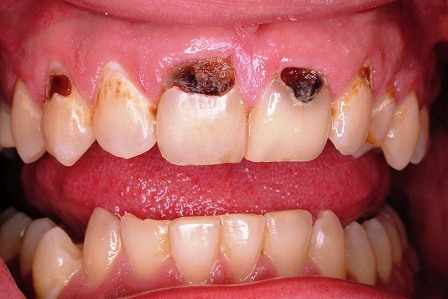
Dental Caries happens when the enamel and dentine of a tooth become softened by acid attack after one had eaten or drunk anything containing sugar. Over time, the acid makes a cavity (hole) in the tooth. Dental decay is also known as tooth decay or dental caries.
The World Health Organisation (WHO) describes Dental caries as the world’s most widespread chronic disease. Studies in different parts of n the African Region, indicate a rapidly rising disease burden among both urban and rural populations. Most tooth decay remains untreated.
What causes dental caries?
Dental caries is caused by plaque acids that gradually dissolve away the enamel and dentine of the tooth. The decay damages the tooth and may lead to tooth filling for Restoration or even taken out the tooth.
Why does the tooth decay?
Decay happens when sugars in food and drinks react with the bacteria in plaque, forming acids. Every time one eats or drinks anything containing sugar, these acids attack the teeth and start to soften and dissolve the enamel. The acid attack can last for an hour after eating or drinking before the natural salts in the saliva cause the enamel to ‘remineralise’ and harden again. It’s not just sugars that are harmful; other types of carbohydrate foods and drinks react with plaque and form acids. (These are fermentable carbohydrates e.g. hidden sugars in processed food, Natural sugars like those in fruit and cooked starch). Generally, anything with ‘ose’ in the name is a sugar e.g. sucrose, maltose and so on.
Having sugary or acidic snacks and drinks between meals can increase the risk of decay because one’s teeth come under constant attack and do not have time to recover. It is therefore important not to keep having sugary snacks or sipping sugary drinks throughout the day.
Signs of dental decay
- In the early stage of dental decay, there are no symptoms but it can be picked out in the dental clinic during physical or radiographic examination. This is why you should visit the dental clinic as small holes are much easier to treat than advanced ones.
- Once a cavity has reached the dentine, the tooth becomes sensitive particularly to sweet foods and drinks, acidic and hot foods.
- As the decay nears the Pulp, one may suffer from toothache. If the toothache is brought on by hot or sweet foods, this may last for few seconds. As the decay gets closer to the dental Pulp, the pain may last longer and one may need to take pain killers to control the pain. At this point, dental care should be sought straight away as the tooth is under attack, dying and may develop a dental abscess if it’s not treated.
What to do to prevent tooth decay.
The best way to prevent tooth decay is by brushing the teeth properly two times daily (last thing at night and after breakfast in the following morning) with a fluoride toothpaste.
Make sure the inner, outer and biting surfaces the teeth are brushed. Using interdental brushes, dental floss or tapes also help to remove plaques and food trapped between teeth and where they meet the gum. These are areas an ordinary toothbrush can’t reach.
Other things to do are to have regular visits to the dentist, avoid sugary and acidic food and drinks as possible, no snacking in between meals, eat sugar-free gum for up to 20 mins after a meal to help produce more saliva which helps to cancel out any acids that have formed.

